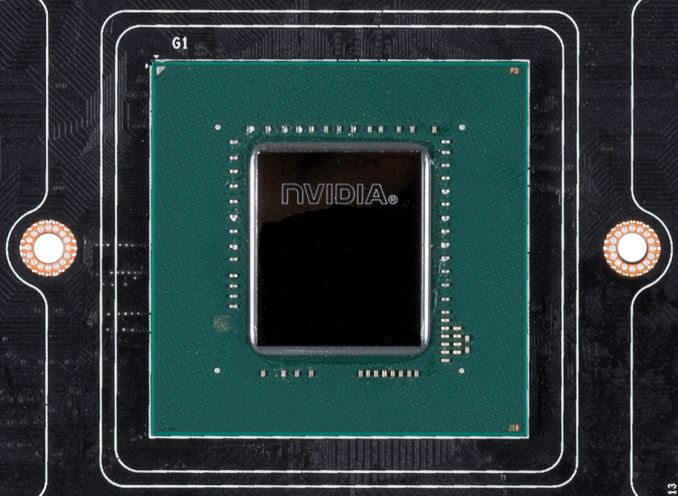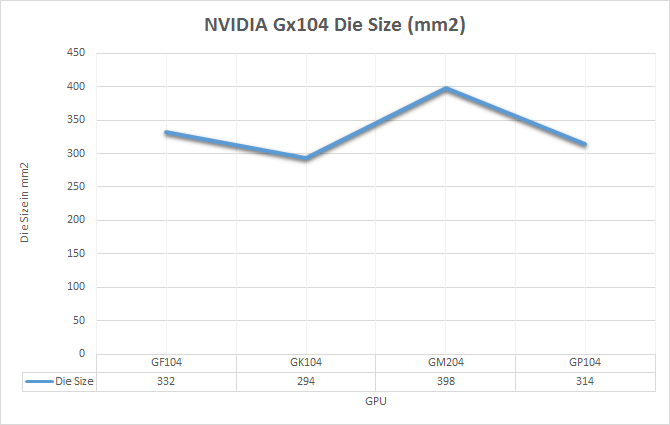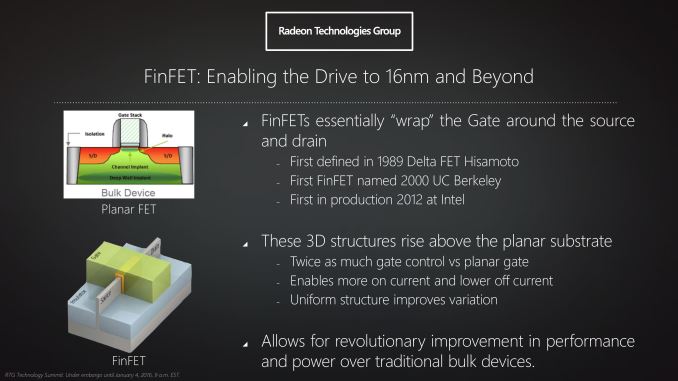The NVIDIA GeForce GTX 1080 & GTX 1070 Founders Editions Review: Kicking Off the FinFET Generation
by Ryan Smith on July 20, 2016 8:45 AM ESTGP104: The Heart of GTX 1080
At the heart of the GTX 1080 is the first of the consumer-focused Pascal GPUs, GP104. Though no two GPU generations are ever quite alike, GP104 follows a number of design cues established with the past couple 104 GPUs. Overall 104 GPUs have struck a balance between size and performance, allowing NVIDIA to get a suitably high yielding GPU out at the start of a generation, and to be followed up with larger GPUs later on as yields improve. With the exception of the GTX 780, 104 GPUs been the backbone of NVIDIA’s GTX 70 and 80 parts, and that is once again the case for the Pascal generation.
In terms of die size, GP104 comes in at 314mm2. This is right in NVIDIA’s traditional sweet spot for these designs, slotting in between the 294mm2 GK104 and the 332mm2 GF104. In terms of total transistors we’re looking at 7.2B transistors, up from 3.5B on GK104 and the 5.2B of the more unusual GM204. The significant increase in density comes from the use of TSMC’s 16nm FinFET process, which compared to 28nm combines a full node shrink, something that has been harder and harder to come by as the years have progressed.
Though the density improvement offered by TSMC’s 16nm process is of great importance to GP104’s overall performance, for once density takes a back seat to the properties of the process itself. I am of course speaking about the FinFET transistors, which are the headlining feature of TSMC’s process.
We’ve covered FinFET technology in depth before, so I won’t completely rehash it here. But in brief, FinFETs are an important development for chip fabrication as processes have gone below 28nm. As traditional, planar transistors have shrunk in feature size – and ultimately, the number of atoms they’re comprised of – electrical leakage has increased. With fewer atoms in a transistor, there are equally fewer atoms to control the flow of electrons.
FinFET in turn is a solution to this problem, essentially allowing fabs to turn back the clock on electrical leakage. By building transistors as three-dimensional objects with height as opposed to two-dimensional objects, giving FinFET transistors their characteristic fins in the process, FinFET technology greatly reduces the amount of energy a transistor leaks. In practice what this means is that FinFET technology not only reduces the total amount of energy wasted from leakage, but it also allows transistors to be operated at a much lower voltage, something we’ll see in depth with our analysis of GTX 1080.
FinFETs, or rather the lack thereof, are a big part of why we never saw GPUs built on TSMC’s 20nm process. It was TSMC’s initial belief that they could contain leakage well enough using traditional High-K Metal Gate (HKMG) technology on 20nm, a bet they ultimately lost. At 20nm, planar transistors were just too leaky to use for many applications, which is why ultimately we only saw SoCs on 20nm (and even then they were suboptimal). FinFETs, as it turns out, are absolutely necessary to get good performance out of transistors built on processes below 28nm.
And while it took TSMC some time to get there, now that they have the capability NVIDIA can reap the benefits. Not only can NVIDIA finally build a relatively massive chip like a GPU on a sub-28nm process, but thanks to the various beneficial properties of FinFETs, it allows them to take their designs in a different direction than what they could do on 28nm.













200 Comments
View All Comments
Ryan Smith - Wednesday, July 20, 2016 - link
The prices listed are based on checking Newegg daily for the past week. The sub-$429 cards have never been in stock when I've checked.powerarmour - Wednesday, July 20, 2016 - link
Lulz how late?jabbadap - Wednesday, July 20, 2016 - link
Great thorough review.You have a funny typo on the fast sync page:
" Fast Sync doesn’t replace either Adaptive Sync or G-Sync"
I think you meant Adaptive Vsync, not that VESA standard which nvidia does not support.
Ryan Smith - Wednesday, July 20, 2016 - link
Right you are. Thanks!bill44 - Wednesday, July 20, 2016 - link
Where can I find a FULL review please?Thanks
Ryan Smith - Wednesday, July 20, 2016 - link
"Where can I find a FULL review please?"This article was an excerpt of the full review. The complete, 5 volume set on GTX 1080 will be available at your local book store in October. ;-)
catavalon21 - Wednesday, July 20, 2016 - link
AwesomeAndrewJacksonZA - Thursday, July 21, 2016 - link
Cool! Thanks Ryan! Did you reach your stretch goals on your Kickstarter campaign so that you can afford the scanning electron microscope for great photos?bill44 - Thursday, July 21, 2016 - link
Thanks Ryan.I was on about audio. Not for games, but for my music playback (SACD, DVDA) with different sampling rates that includes 88.2 and 176.4Khz. I can't find FULL specifications for the 100 series GTX cards that include this information, or any decoding capabilities. I was looking for the GTX 1060 for HTPC use with madVR.
Where can I find out about audio and sampling rates? MadVR capabilities?
Ryan Smith - Friday, July 22, 2016 - link
As far as I know, audio capabilities are the same as on the 900 series. Unfortunately I don't have more detail than that right now.